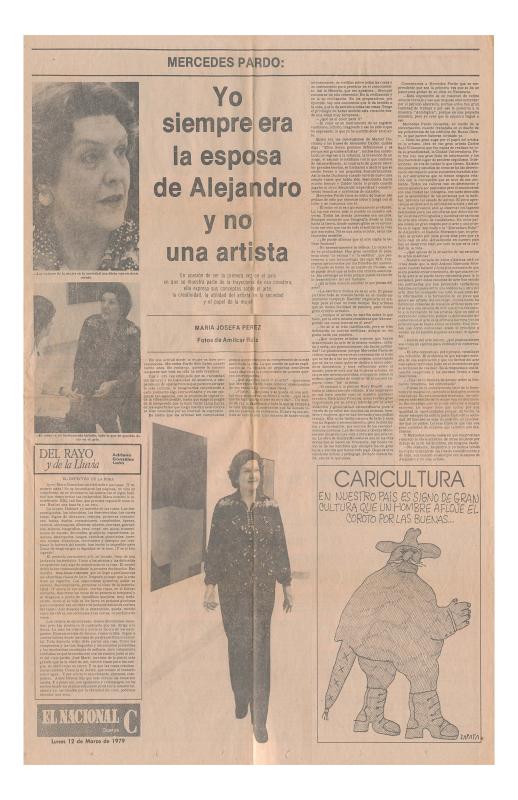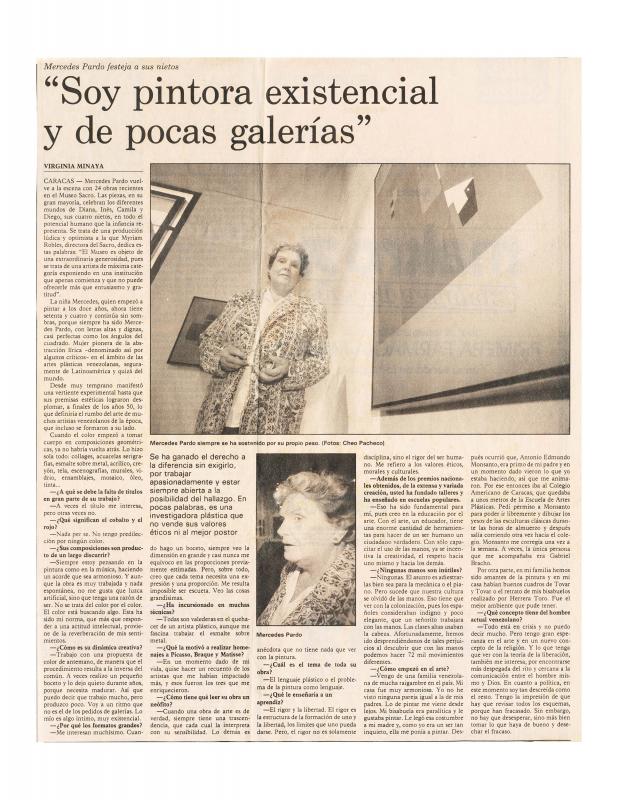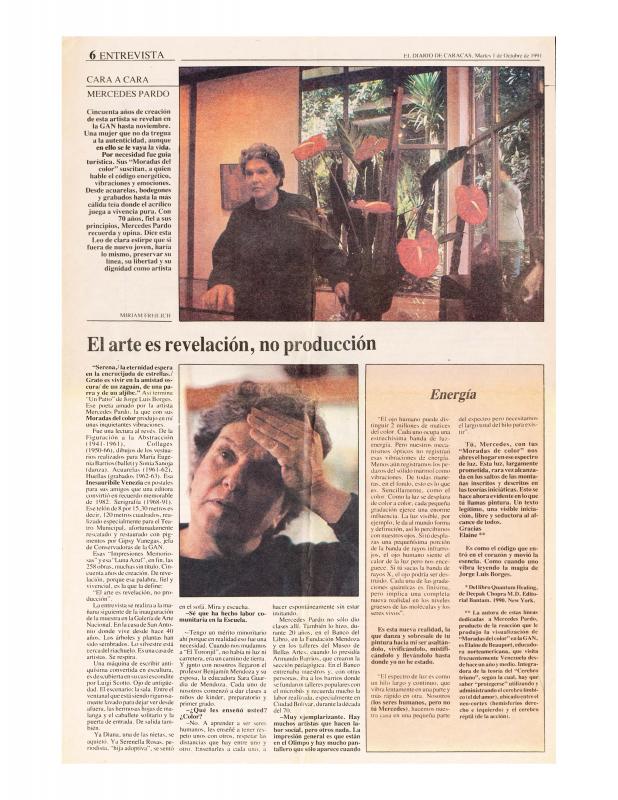Baiba Pecins made this article for The Daily Journal, a Venezuelan newspaper for English-speaking readers (1945–2008). He presents the work of Mercedes Pardo (1921–2005) in her retrospective Color: Piel, Presencia Meditada: Mercedes Pardo. This 1979 exhibition included works from the last twenty-six years of Pardo’s production (oils, collages, silkscreens, and acrylics, among other techniques), which had been on show since February, 11, 1979, at the GAN (Galería de Arte Nacional) in Caracas, a venue where Pardo had exhibited her most recent work in a show titled Del taller de Mercedes Pardo hoy (July/August 1978). The article was published one week after Pardo was awarded the Premio Nacional de Artes Plásticas; both her first retrospective and her first National Prize for Plastic Arts came after three decades of production by the artist, her contribution to the emergence of abstraction in Venezuela in the early 1950s included.
Pecins underlines the importance of continuity in Pardo’s art production, while also providing two specific examples at her chronological and structural extremes: her 1960s collages and her most recent works in acrylics. The collages are proposed as a strategy of inclusion of reality in her art view through cut-out figurative images. That time it is also discussed a moment in which Pardo is “deeply conscious of the advances of Consumerism.” Pardo’s concerns are due to the effect that Venezuelan booming economy had on the art systems would be front and the core of her interviews from the 1970s onward [see in the ICAA Digital Archive (doc. no. 1331363">1331363)]. Pecins’s discussion of Pardo’s latest work is focused on geometry, and presented as a starting point. Quoted in this article, Pardo’s words—“there is nothing strictly intentional in my work”—seem to contradict the already studied structural organization of these geometric works, her careful use of color to generate pictorial space, and the lengthy preparatory stages at the crux of her creative processes. It is also worth mentioning another phase of her career, not discussed in this article but on show in her 1979 retrospective: the Informalist phase. From the early 1950s and throughout her career, Pardo experimented with abstraction through a non-geometric approach and in a variety of supports and techniques.
For other reviews of Color: Piel, Presencia Meditada: Mercedes Pardo (1979), see Virginia París, “Mercedes Pardo y su presencia meditada” (doc. no. 1331347); Manuel Bolívar Graterol, “Ambigüedad y disonancia” (doc. no. 1331331); María Josefa Pérez, “Yo siempre era la esposa de Alejandro y no una artista” (doc. no. 1331363">1331363); Juan Acha, “Color: Piel, Presencia Meditada de Mercedes Pardo” (doc. no. 1331395); anonymous, “Mercedes Pardo: ‘Presencia Meditada’” (doc. no. 1331411); Elizabeth Schön, “Exposición Antólogica” (doc. no. 1331299); and Roberto Guevara, “Mercedes Pardo: Color Persuasivo” (doc. no. 1331315). For further reading on Pardo’s views on the commodification of art, see Virginia Minaya, “Soy pintora existencial y de pocas galerías” (doc. no. 1331020); and Miriam Freilich, “El arte es revelación, no producción” (doc. no. 1325266).



